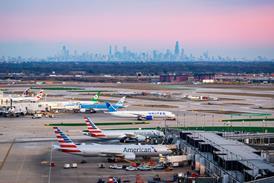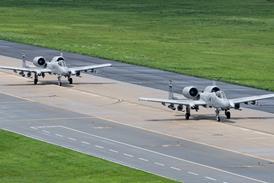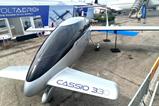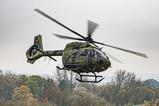The UK has confirmed the early retirement of 17 Puma HC2 helicopters, 14 of its older Boeing CH-47 Chinooks and the Watchkeeper uncrewed air vehicle (UAV) in a bid to slash costs.
Disclosing the move in a statement to the House of Commons on 20 November, defence secretary John Healey said “six outdated military capabilities will be taken out of service”.

This will save £150 million ($190 million) over the next two years, he says, and up to £500 million over five years.
Healey says the retirement of the Chinooks – already slated to leave service in the coming years – would be “accelerated”.
In March this year, the UK ordered 14 long-range CH-47Fs due for delivery from 2027.
“Ahead of this arrival, decommissioning of the oldest fourteen aircraft will be accelerated as they reach their next deep maintenance period over the next four years,” Healey adds in a written statement.
Overall, the Royal Air Force’s (RAF’s) Chinook fleet will be cut to 51 examples from 60 at present.
Meanwhile, the 17 Puma HC2s – the remaining in-service examples of a 23-strong fleet – “will not be extended”, Healey says.
Already scheduled for replacement through the UK’s New Medium Helicopter (NMH) requirement, the Pumas are set to leave service in March 2025, when the current suport contract ends.
Airbus Helicopters, which supports the platform, had previously suggested the Puma’s life could be extended until 2035 if needed.
Leonardo Helicopters’ AW149 is the sole remaining contender for NMH, with the other candidates, Airbus Helicopters and Sikorsky, having chosen not to bid their respective H175M and S-70M Black Hawk.
At present, Pumas are deployed to Brunei and Cyprus to backfill for now-retired Bell 212/412s but are set to be replaced from 2026 by a fleet of H145-based Jupiter HC2s, deliveries of which will begin shortly.
Healey says during the “capability gap” from March 2025 until the H145s arrive in 2026 ”a commercial or military solution will be used for firefighting with our sovereign base in Cyprus and alternatives to Brunei will be used for some elements of jungle training.”
Justifying the decision to axe the British Army’s 46 Watchkeepers, Healey describes the UAV as a “a 14-year-old army drone which technology has overtaken”.
A Thales UK-led development of Elbit Systems’ Hermes 450 surveillance platform, the Watchkeeper had a troubled development and service history, with multiple examples lost to crashes.
”Following the retirement of Watchkeeper Mk1, the army will rapidly switch to a new advanced capability, drawing on the most recent operational lessons and technological developments,” Healey adds.
In addition, Healey plans to scrap several vessels operated by the Royal Navy, including Type 23 frigate HMS Northumberland, landing ships HMS Albion and HMS Bulwark, and two Wave-class tankers, operated by the Royal Fleet Auxiliary.
Following its election in July, the UK’s new Labour government is conducting a Strategic Defence Review (SDR), which is expected to report back next year.
Healey says the early retirement decisions “are all backed by the [service] chiefs and taken in consultation with the SDR reviewers”.
This story has been updated with additional information on retirement timelines.































